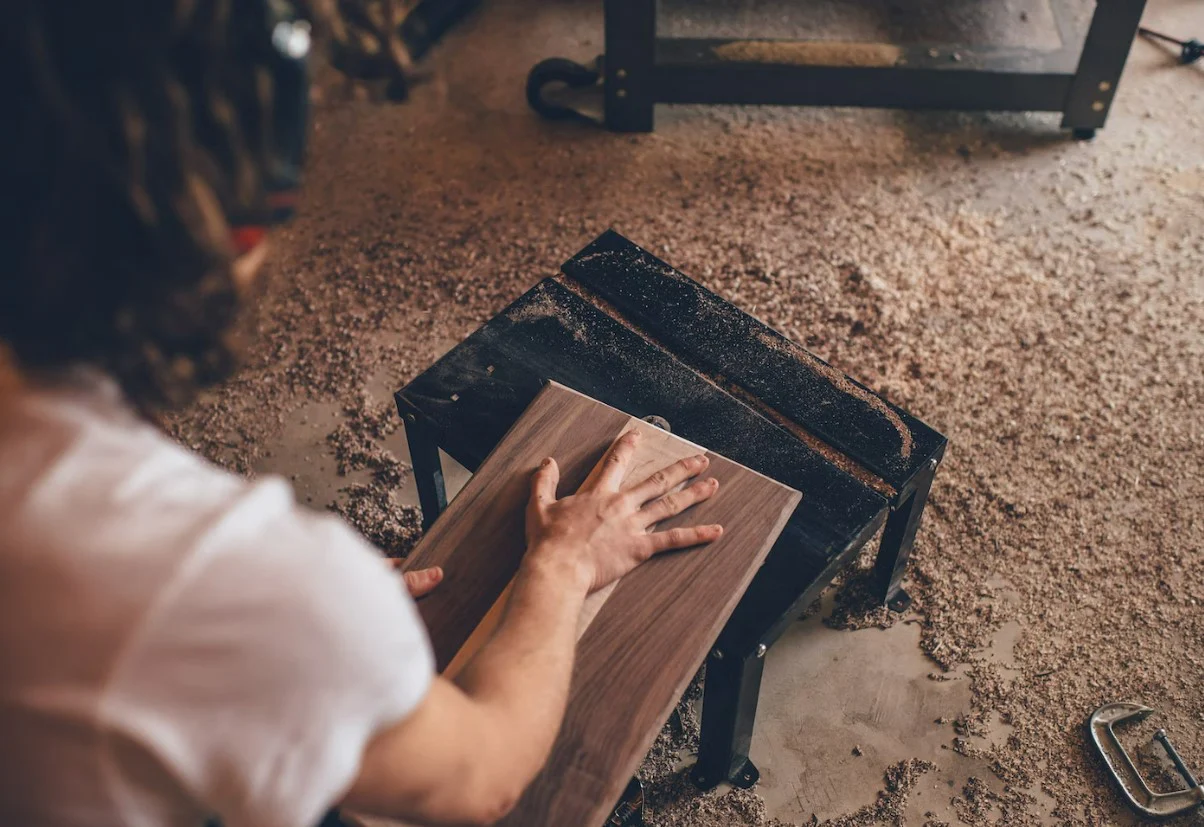If you have an old wood table, a wood column or maybe a wood deck that’s starting to show some sign of age, then a wood hardener can save it from decay. With wood hardener, you’ll strengthen it in no time.
A wood hardener can harden the wood after 2 to 4 hours by seeping into the pores of the wood, hardening and keeping the wood intact.
If you want to save your wooden projects, then learning how to use wood hardener is a must.
This guide will walk you through the process, from picking the right tools to applying the hardener correctly.
We’ll even cover safety measures and common issues you might face.
Key Takeaways
- Wood hardener restores and strengthens decaying woods.
- Epoxy resin or consolidants can be used as alternatives if wood hardener is unavailable.
- Clean the wood surface thoroughly before applying the hardener.
- Wear personal protective equipment (PPE) and work in a well-ventilated space when using wood hardener.
Understanding the Basics of Wood Hardener
Wood hardener’s main advantage and benefit is its ability to restore and strengthen decaying or soft wood, making it durable.
This prevents further damage and extends the wood’s lifespan, saving you replacement costs and time.
Wood hardeners typically consist of resins that penetrate the wood’s fibers, consolidating and strengthening them. This process makes the wood more durable and resistant to decay, insects, and moisture.
It’s often used on rotted or punky wood, such as in decks, furniture, or historic structures.
There are wood hardener alternatives if you can’t get a hold of a wood hardener. Epoxy resin is a great substitute. It is not just a hardener but it also fill in gaps and holes, providing a smooth finish.
However, nothing beats using a dedicated wood hardener for the best results.
Necessary Tools and Materials for Applying Wood Hardener
You’ll need a few essential tools for applying wood hardener, such as a paintbrush and gloves, but don’t forget the wood hardener itself. Proper pre-application preparation is crucial. Start with cleaning the wood and clearing it of any debris. Here’s a handy table:
| Tools/Materials | Purpose |
|---|---|
| Paintbrush | For applying the hardener |
| Gloves | To protect your hands |
| Wood Hardener | To harden the wood |
| Clean Cloth | For cleaning the wood |
| Sandpaper | To smoothen the wood |
Step-by-Step Guide on How to Use Wood Hardener
Start by cleaning the wood surface thoroughly. If you’re considering hardener alternatives, ensure they’re compatible with your wood type.
Once clean, apply the hardener using a brush, following the grain of the wood. This application technique ensures an even coat, penetrating deeply into the wood. Let it soak for about 2-4 hours. Don’t rush it; the hardener needs time to work its magic.
After it’s dry, apply a second coat if necessary.
Safety Measures While Using Wood Hardener
Despite the significant benefits of wood hardener, always remember to wear protective gear and work within a well-ventilated space, because without these safety measures, you’re risking your health. Personal Protective Equipment (PPE) is vital. It’s not just about gloves; you should also consider safety glasses and a respirator mask to protect against harmful fumes.
Proper wood hardener disposal is equally essential. Don’t just toss the used containers into the trash. Instead, contact your local waste disposal service to find out the right way to get rid of them. They’ll have specific procedures you need to follow.
Troubleshooting Common Issues With Wood Hardener
So, you’re dealing with wood hardener issues, but don’t worry, we’re going to troubleshoot some common problems and get you back on track. Hardener inefficiency and application errors are often the culprits here, but they’re easily fixed with a bit of know-how.
Here’s what you can do:
- Check if you’re applying the hardener properly. Inadequate application can lead to inefficiency.
- Make sure the wood is sufficiently dry before application. Wet wood won’t absorb the hardener well.
- Reapply if needed. Sometimes, one coat just isn’t enough.
- Use the right tools. Brushes or sprayers can make a difference in application.


Leave a Reply